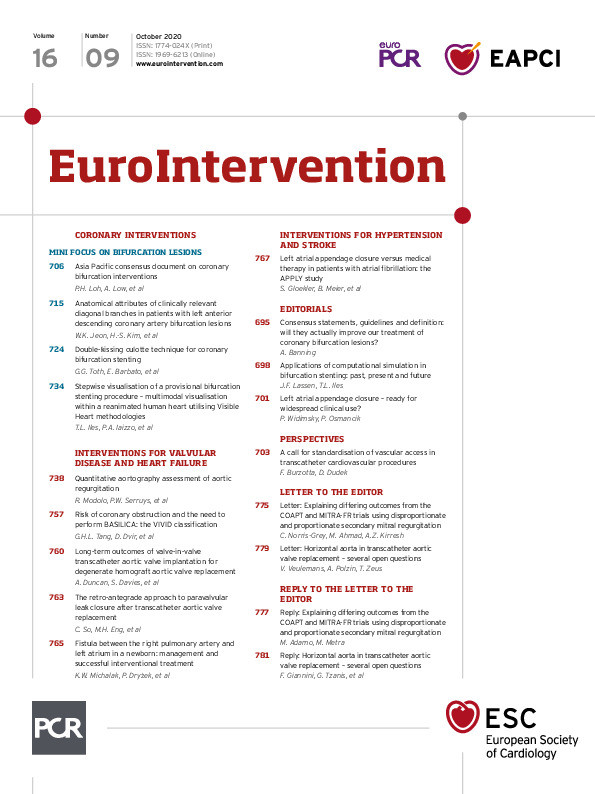
Transcatheter aortic valve replacement (TAVR) has become the treatment of choice in patients with symptomatic severe aortic stenosis at high and intermediate surgical risk. Multislice computed tomography (MSCT) is the gold standard for cardiac three-dimensional reconstruction, device sizing, identification of the perpendicular view angulation, and calcium-related risk stratification prior to TAVR.
A pronounced horizontal aorta (HA) >48° was reported to influence acute procedural success adversely in self-expanding but not balloon-expandable TAVR1. Also, patients with aortic angulation (AA) >70° are usually excluded from clinical trials with self-expanding TAVR2.
Even though Di Stefano et al3 demonstrated in their retrospective single-centre study that the presence of HA had no impact on device success and short-term clinical outcomes of TAVR with either new-generation self-expanding or balloon-expandable devices, in clinical practice HA remains a challenge in self-expanding TAVR depending on device size, calcification burden, and accompanying extreme peripheral tortuosity, leading to the choice of a stiffer wire or a switch to balloon-expandable devices if necessary. It seems evident that the chosen primary threshold of Abramowitz et al with an AA >48° has to be adjusted to current generations and possibly likewise to several device sizes. Especially the 34 mm device (CoreValve® Evolut™ R [ER-34]; Medtronic, Minneapolis, MN, USA) is limited in handling and controllability if horizontal anatomy of the aortic root is pronounced. Concordantly, in the current study, the use of the ER-34 in HA anatomy was very low with only five cases (2.2%), which may be considered a result of a noteworthy pre-selection process related to unfavourable anatomic conditions. An additional analysis of the data by Di Stefano et al would be interesting: were there associations of adverse events in HA with self-expanding devices depending on valve size and calcification burden, even when most of the outcome results were similar according to balloon-expandable versus self-expanding valves?
Taking into account that TAVR is being expanded to lower-risk patients, risk factors favouring intraprocedural adverse events in HA should be analysed in further studies to gain more knowledge about the best implantation strategy in self-expanding new-generation TAVR (implantation under rapid pacing, balloon valvuloplasty, wire choice).
Conflict of interest statement
V. Veulemans, A. Polzin and T. Zeus have received consulting fees, travel expenses or study honoraria from Medtronic and Edwards Lifesciences outside this work.
Supplementary data
To read the full content of this article, please download the PDF.

